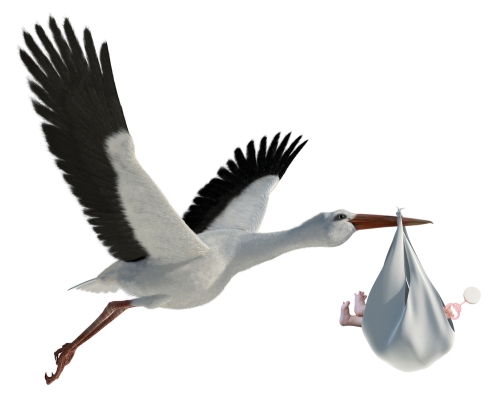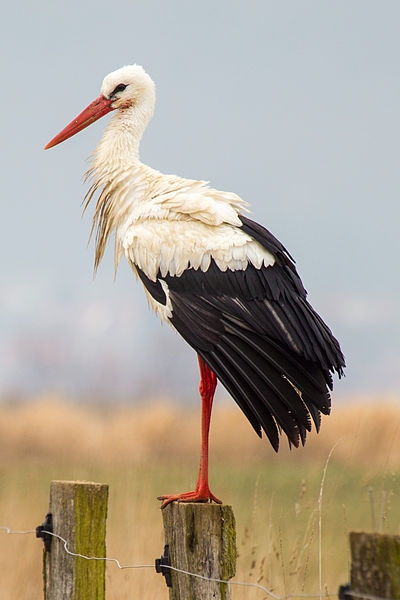
13 March 2013
We’ve all heard the story that storks bring babies. It was Grandma’s easy to answer to “Where do babies come from?”
The legend began where white storks nest in northern Europe, often in close proximity to humans. Their care for their young made them symbols of parental devotion. Slavic folklore held that storks brought unborn souls from paradise to earth in the spring and summer. That’s when the storks returned to northern Europe from their long migration to Africa.
But in the past 30 years many of them have stopped migrating. Large numbers are hanging out in Spain and Portugal. In 1995 there were 1,108 winter storks in Portugal. By 2008 there were 10,000. The number keeps growing and some of them never leave. Many stay year-round to raise their families.
The obvious attraction is Portugal’s landfills. Though white storks are carnivores, they love hanging out at the dump for an easy meal. Do the landfill storks merely visit for the winter? Do they move to other places in Portugal for the breeding season? And where would that be?
Researchers from the University of East Anglia have begun a one year study of stork migration. They’ve captured and tagged 15 adult white storks with satellite monitors to transmit each stork’s location and activity five times per day. The tags are smart enough to record whether the stork’s head is down in a feeding position.
The study is coming at a good time for the birds. In the 20th century white storks declined so badly that they had to be reintroduced in some countries. Now they’ve made a comeback at the dumps but Portugal is slowly replacing its open landfills with covered facilities to process waste food. Where will the storks go?
The study is important for Grandma, too. If the storks don’t leave Portugal, they won’t be bringing babies to Northern Europe anymore. Uh oh!
Read more about the stork study in this Science Daily article.
(image of a stork carrying baby from Shutterstock. Photo of a white stork by Andreas Trepte, www.photo-natur.de. Click on the photo to see the original on Wikimedia Commons)
